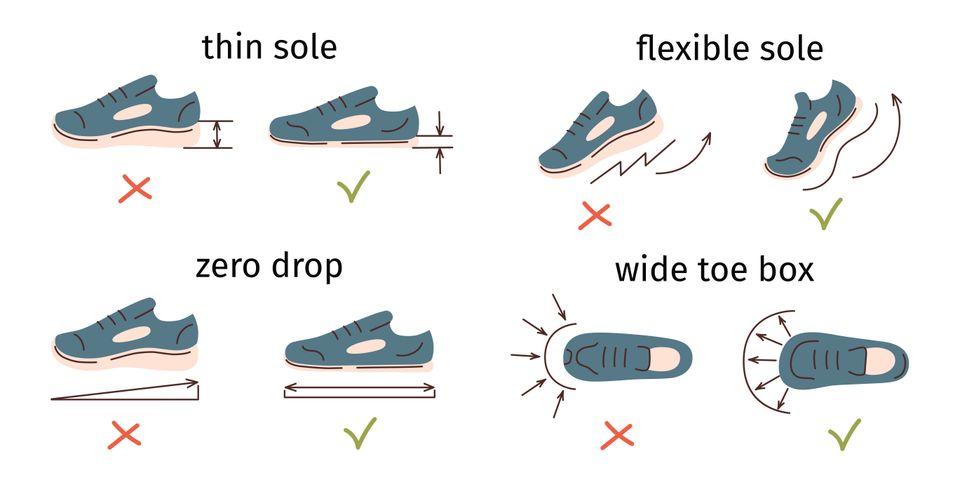

Zero-Drop Vs Traditional Shoes

When it comes to choosing the right footwear, especially for recovery, understanding the differences of zero-drop shoes and traditional shoes is essential. Both offer unique benefits depending on your needs, lifestyle, and foot health. Traditional shoes are often praised for their cushioning and built-in support, where zero-drop shoes focus on restoring natural alignment, strengthening your feet, and creating long-term balance from the ground up.
Understanding how each style of shoes impacts your feet, muscles, muscles and overall alignment is key. If you are dealing with specific issues like bunions, tight calves, or Achilles discomfort, the type of shoe you wear can either support your healing or slow it down.
A zero-drop shoes is where the heel and the forefoot are at the same height, there is no incline or “drop” from the heel to toe. This allows your foot to be in a more natural, barefoot-like position, which can encourage better posture, balance, and foot alignment. It is recommended to gradually adjust to zero-drop shoes because wearing these shoes requires more foot and lower leg strength to support the natural movement these shoes encourage.
Traditional shoes typically offer more cushioning and have a built-in support. Traditional shoes are built to have more shock absorption, which can reduce fatigue during long periods of standing or walking. They have an incline from the heel to toe, usually this incline is between 6mm-12mm.
The goal isn’t to say one type is the “right” shoe or the “wrong” shoe, but to understand the differences between the two. Trying on the different types of footwear and deciding on what feels the best for your body.
Understanding how each style of shoes impacts your feet, muscles, muscles and overall alignment is key. If you are dealing with specific issues like bunions, tight calves, or Achilles discomfort, the type of shoe you wear can either support your healing or slow it down.
A zero-drop shoes is where the heel and the forefoot are at the same height, there is no incline or “drop” from the heel to toe. This allows your foot to be in a more natural, barefoot-like position, which can encourage better posture, balance, and foot alignment. It is recommended to gradually adjust to zero-drop shoes because wearing these shoes requires more foot and lower leg strength to support the natural movement these shoes encourage.
Traditional shoes typically offer more cushioning and have a built-in support. Traditional shoes are built to have more shock absorption, which can reduce fatigue during long periods of standing or walking. They have an incline from the heel to toe, usually this incline is between 6mm-12mm.
The goal isn’t to say one type is the “right” shoe or the “wrong” shoe, but to understand the differences between the two. Trying on the different types of footwear and deciding on what feels the best for your body.
